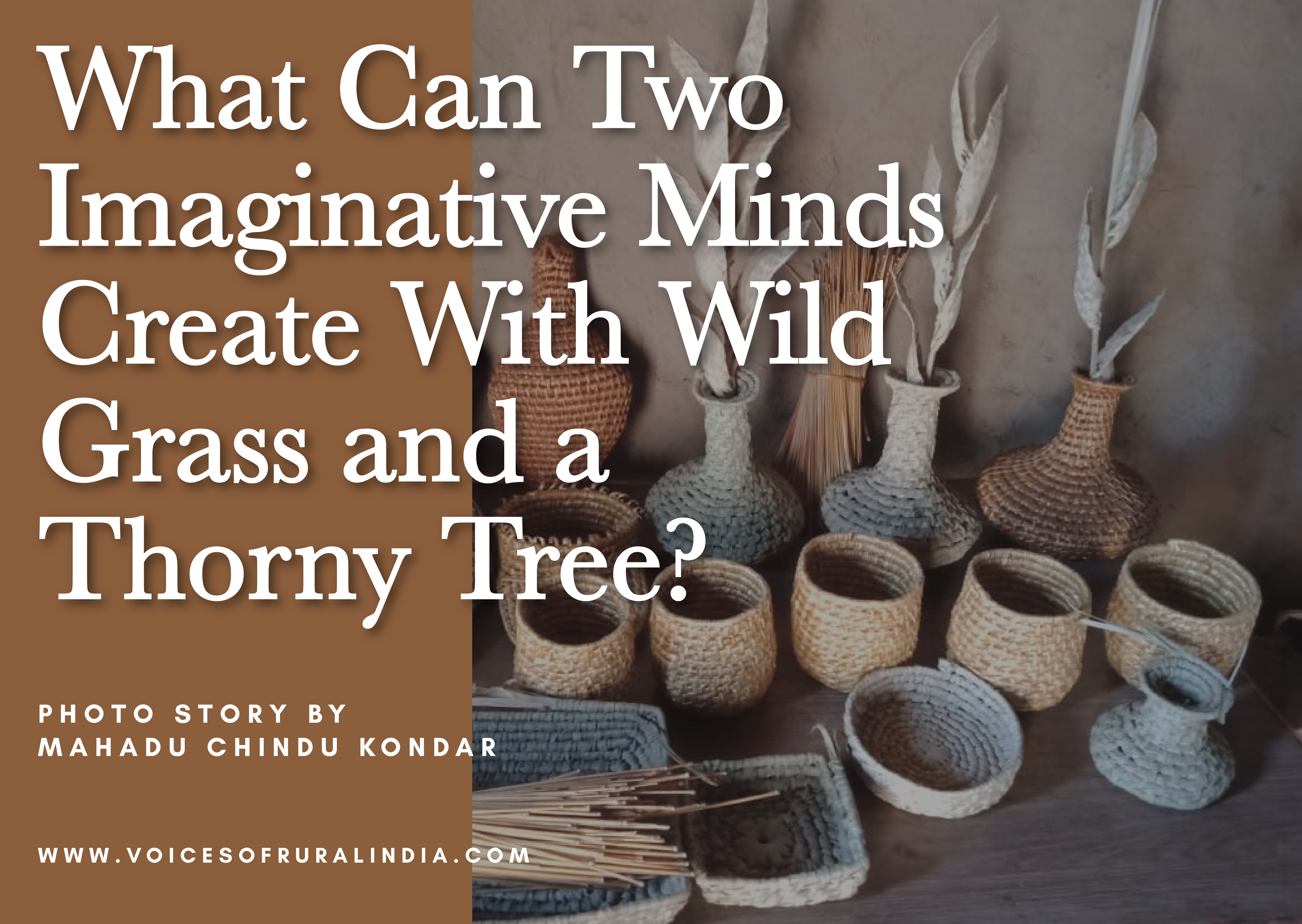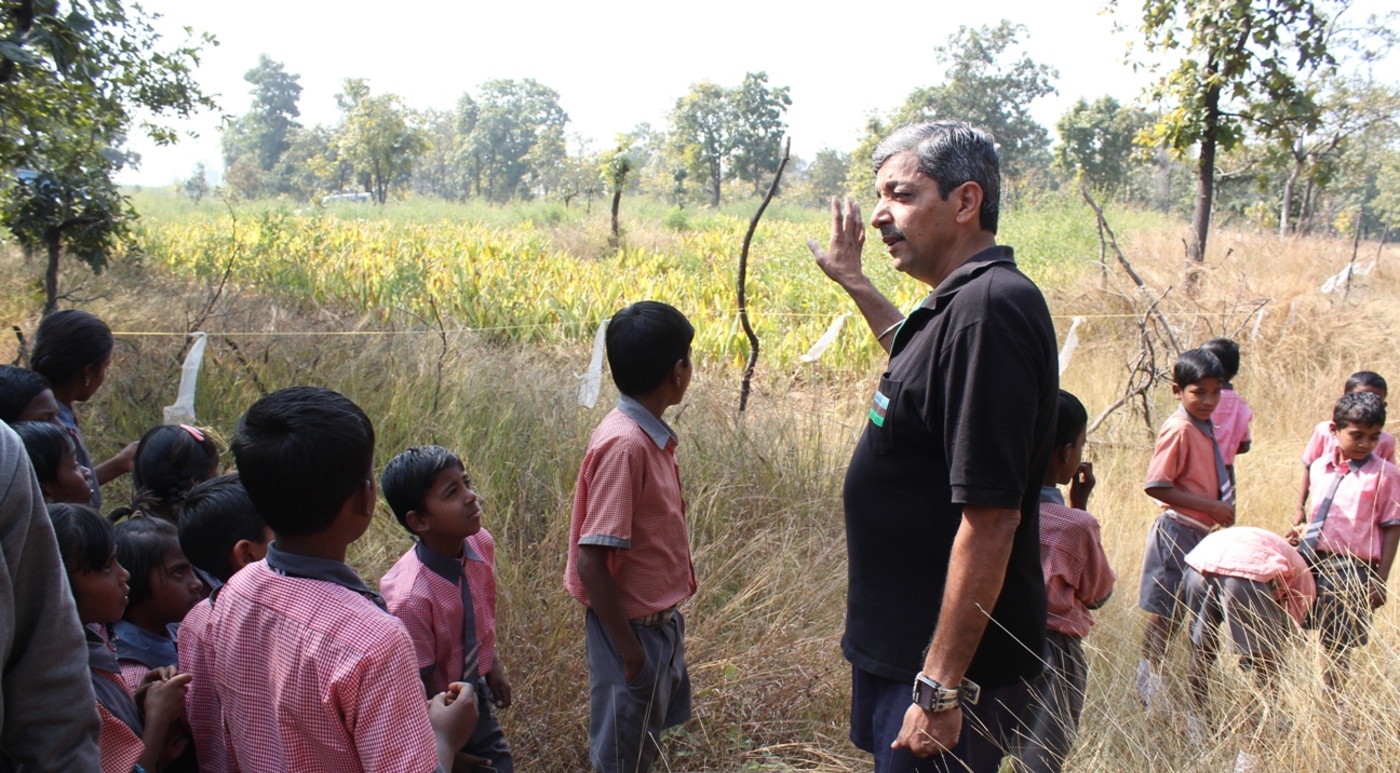
Anirudh Chaoji, Biologist at Tadoba Andhari Tiger Reserve and Director of Ran Mangli Foundation
Many RT homestays, hotels and travel companies operate in relatively remote regions where access to technology, materials and infrastructural support systems is limited. However, a bit of ingenuity, innovative thinking and can-do attitude can help RT practitioners come up with Jugaad solutions to real-life problems. Here Anirudh Chaoji explains some of the solutions he came up with at his farm in Ran Mangli.
If India had a national policy, it probably could be Jugaad. Unfortunately, this word is often confused with ‘Kaam Chalu’ ideas or products that would have no long term benefits. But that’s not Jugaad. On the contrary, Jugaad is imagination at the highest level, where the Jugaadu, the practitioner, is not restrained by the unavailability or unaffordability of the exact material or ideas. It is creating innovative and economic solutions with the available resources.
This is a story of one such Jugaadu at work at a Jugaad Centre. Ran Mangli is a small village around 70 km from Nagpur adjoining the beautiful Umred Karhandla Wildlife Sanctuary. While the life here is blessed with all the benefits of a simple laid back village, the problems faced are common to almost all other villages in India. Our farm is no exception. We have a small inherited land holding outside the village. Till six years ago, it was never cultivated. In fact, we have not touched a diverse jungle in half of our land and are taking up agriculture in only the open piece with a small home located in the midst of it.
Dealing with animal raiders
Like us, many villagers in India are faced with the problem of wild boars and blue bulls raiding their crops. A number of ideas have been tried by the farmers to protect their crops. Many even stay awake the whole night with torch lights and beat drums, to chase away the raiders. The best solution for this problem is Solar Battery operated fencing, which scares but does not injure the animal. We too invested in this fencing once our boundary was demarcated. In the meanwhile we found that these animals were averse to unknown moving objects. Our Jugaad had a nylon rope tied all around the farm with colourful plastic bags at frequent intervals (as shown in the main photograph on top). At night, these bags would flutter noisily. The first season was trouble free with this cheap technique. Animals did not venture into the farm. However, soon the animals probably realised the bogey and sneaked in without any resistance. This is where an important lesson came back to mind--you cannot fool all people, and animals too, all the time. Finally we innovated and regularly started changing the moving objects, many times adding sound effects too!
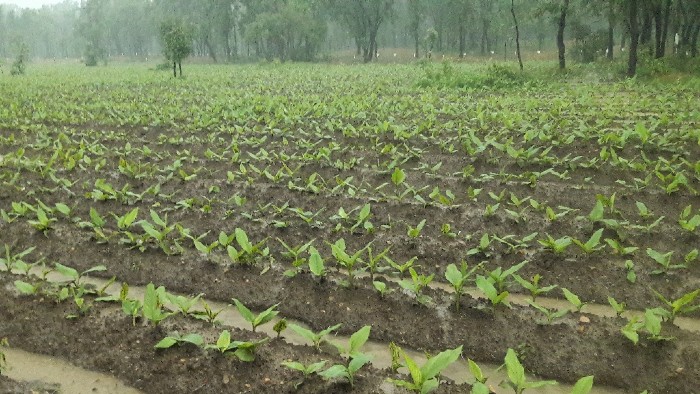
To prevent animal attachk use crops that are not normally eaten by the herbivores. Turmeric is an example
Soon we landed up on the most effective Jugaad. We changed the cropping pattern. Instead of the routine crops, we started taking up Turmeric as a crop. While it had all the commercial benefits, the biggest benefit was that neither the blue bulls nor the wild boars were now interested in the crop.
Creating water source
Agriculture is water dependent and we needed to ensure availability of water throughout the year. The option available was to construct a Cement bund across a small stream that flows through our land. However, the idea was shot down on receiving the quotation for the structure. A simple Jugaad did the trick. For a cost that was less than 5% of the bund budget, we are now storing much more water. A JCB was called and it dug up a large reservoir. This ensured multiple benefits. The erosive action of the stream was reduced and percolation of water was ensured. This followed a simple principle of making ‘the running water to walk; walking water to stop’. A couple of years later, a Government scheme helped us increase the water holding of the water-body.
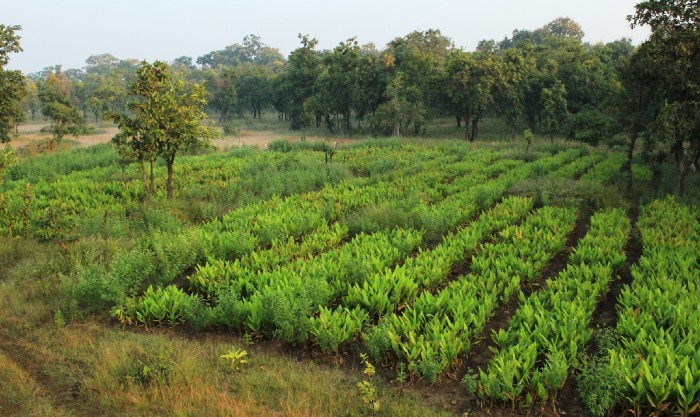
The green fields thanks to the reliable supply of water
In the meanwhile we had made a bore-well that was providing us with a decent amount of water. But in most parts of our country, we keep digging bore-wells to extract ever reducing levels of water in the aquifer. In this case, as a Jugaad I dug a pit all around the bore-well and refilled it with boulders with the top layer of thick sand. This has ensured that the rain water would collect around the bore-well and percolate directly to the aquifer below. Today, five years later, this bore-well supports us in taking up agriculture in May and June too.
Getting electricity
The location in a remote forest side gives the place a very special charm. However, one of the biggest problems was getting an electricity connection. The Jugaad solution stepped in. I managed to get two Solar Panels from a friend, an old car battery from the mechanic, and a solar inverter from another friend. For two years, this was the source of electricity in our house till an agricultural connection was sanctioned.
You need to see the next Jugaad to believe it. This is the Solar Cooker. It is crafted from, believe it or not, a car tube and a glass-pane. And rice started getting cooked in it. Later we were given a Solar cooker that cooks much faster.
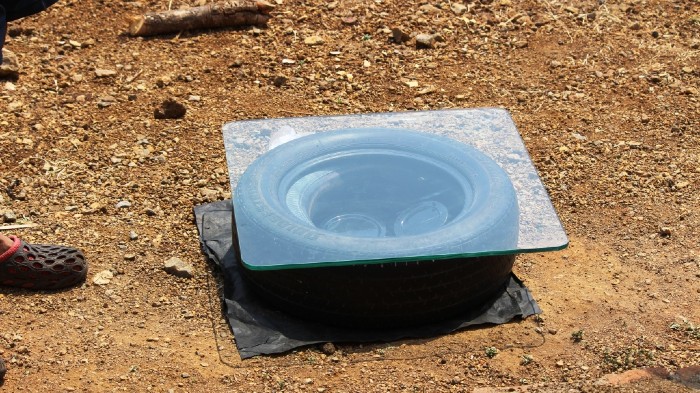
The Jugaad solar cooker
The Biogas unit
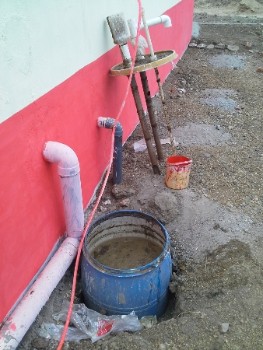 The most interesting story is reserved for Biogas. At that time we had one cow and her calf. We were already converting their dung into good manure. But as a student of science, I always wanted to have a working biogas plant at the Jugaad Centre. Buying one was proving to be a costly proposition. YouTube helped out with DIY technology. I made the Biogas unit and it started to produce gas too. I was mighty happy. One day the farm hand called up saying there was a big noise and when he went to check on it, the lid of the biogas chamber had blown off (photo on the left). I had not accounted for gas that builds-up when the stove was not in use for a couple of days. But that gave me confidence that Biogas did not need Rocket Science Technology! I now have a decent Biogas unit that I purchased from the market.
The most interesting story is reserved for Biogas. At that time we had one cow and her calf. We were already converting their dung into good manure. But as a student of science, I always wanted to have a working biogas plant at the Jugaad Centre. Buying one was proving to be a costly proposition. YouTube helped out with DIY technology. I made the Biogas unit and it started to produce gas too. I was mighty happy. One day the farm hand called up saying there was a big noise and when he went to check on it, the lid of the biogas chamber had blown off (photo on the left). I had not accounted for gas that builds-up when the stove was not in use for a couple of days. But that gave me confidence that Biogas did not need Rocket Science Technology! I now have a decent Biogas unit that I purchased from the market.
The best part of Jugaads is that you do it all yourself and you enjoy the process completely. This is something that money can’t buy




